(t)rust the process?
23.11.2025 06:35 — 👍 1 🔁 0 💬 0 📌 0Vikram Shivakumar
@vikramshivakumar.bsky.social
PhD Student @ JHU Langmead Lab
@vikramshivakumar.bsky.social
PhD Student @ JHU Langmead Lab
(t)rust the process?
23.11.2025 06:35 — 👍 1 🔁 0 💬 0 📌 0Really excited to see our new work in scaling Mumemto to any size pangenome published in Genome Research this morning. And right on cue with the great opportunity to present this work at #GI2025 this week.
07.11.2025 21:29 — 👍 16 🔁 5 💬 1 📌 0


Nicole Brown gave a fantastic talk on Identifying introgressions across pangenomes with Panagram
It uses k-mer conservation to annotate genomic variation across hundreds of genomes, followed by normalization of k-mer profiles to identify introgression events
github.com/kjenike/pana... #GI2025

Figure 1: (A) Anchor-based merging requires a common sequence (red) present in each partition. Multi-MUMs are merged by identifying overlaps between partition-specific matches in the anchor coordinate space, and a uniqueness threshold determines if a MUM is still unique in each partition after truncation. (B) String-based merging enables compu- tation of multi-MUMs between partitions without a common sequence. An example tree (left) is shown, highlighting the use case where partial multi-MUMs specific to internal nodes (starred) can be computed by merging subclade-based partitions up a tree. (right) MUM overlaps are computed by running Mumemto on the MUM sequences, and the uniqueness threshold array ensures overlaps remain unique across the merged dataset. (C) An example Burrows-Wheeler Transform (BWT), matrix (BWM), and Longest Com- mon Prefix (LCP) array, with sequence IDs for each suffix shown (ID). A non-maximal unique match (UM) is shown, and the uniqueness threshold for this match is found us- ing the flanking LCP values. (D) A partial multi-MUM (in blue) is found in all-but-one sequence (excluded in red). Using two anchor sequences (red and orange), all-but-one partial MUMs can be computed using an augmented anchor-based merging method (sec- tion 2.6).


Fantastic talk by @vikramshivakumar.bsky.social Mumemto—Scalable multi-MUM finding for pangenomes
Papers biorxiv.org/content/10.1101/2025.05.20.654611 & doi.org/10.1186/s13059-025-03644-0
Code: github.com/vikshiv/mume...
Very efficient pangenome visualization tool, revealing synteny and variations!
Looking forward to lots of great talks from JHU folks at CSHL this week!
04.11.2025 18:20 — 👍 4 🔁 0 💬 0 📌 0Now this, undergrads, is how you cold email a professor.
03.11.2025 20:32 — 👍 2 🔁 0 💬 0 📌 0
If that’s not enough, we threw in a complete, T2T giraffe genome! Giraffe genomes are pretty cool. Almost all of their chromosomes are Robertsonian fusions of the typically telocentric ruminant chromosomes. 🐄 vs. 🦒...
10.10.2025 15:26 — 👍 9 🔁 4 💬 2 📌 0Last week we were in the Washington Post for our characterization of Robertsonian chromosomes. This week we are entering our 10th day of being shut down and all of our research is on hold. To help me feel not-so-bad, here is a thread of some studies we released right before the shutdown 🧵 [1/n]...
10.10.2025 15:24 — 👍 48 🔁 17 💬 1 📌 0
Figure 1(A) ANI quantifies the similarity between two genomes. ANI can be defined as the number of aligned positions where the two aligned bases are identical, divided by the total number of aligned bases. Historically, ANI was calculated using a single gene family for multiple sequence alignment. Another approach finds orthologous genes between two genomes and reports the average similarity between their CDSs. This method was later extended to whole-genome alignment by identifying local alignments and excluding supplementary alignments with lower similarity. (B) Different ANI tools employ various approaches in calculating ANI values. ANIm, OrthoANI, and FastANI use aligners to identify homologous regions, whereas Mash uses k-mer hashing to estimate similarities. Only alignments with higher similarity represented by green arrows are included in ANI calculations, while red arrows, corresponding to paralogs, are excluded. (C) The proposed benchmarking method evaluates the performance of different tools using both real and simulated data. It assumes that more distantly related species on the phylogenetic tree should have lower ANI similarities. This is measured by calculating the statistics of Spearman rank correlation. We expect a negative correlation between ANI and the tree distance (scatter plot on the right). https://academic.oup.com/bib/article/doi/10.1093/bib/bbaf267/8160681
Excited to share our EvANI benchmarking workflow, published in Briefings in Bioinformatics doi.org/10.1093/bib/...
Computing average nucleotide identity (ANI) is neither conceptually nor computationally trivial. Its definition has evolved over years, with different meanings and assumptions (1/5)
10/10 tool name 👌
22.08.2025 13:43 — 👍 3 🔁 0 💬 1 📌 0
Anchor-based merging requires a common sequence (red) present in each partition. Multi-MUMs are merged by identifying overlaps between partition-specific matches in the anchor coordinate space, and a uniqueness threshold determines if a MUM is still unique in each partition after truncation. (B) String-based merging enables computation of multi-MUMs between partitions without a common sequence. An example tree (left) is shown, highlighting the use case where partial multi-MUMs specific to internal nodes (starred) can be computed by merging subclade- based partitions up a tree. (right) MUM overlaps are computed by running Mumemto on the MUM sequences, and the uniqueness threshold array ensures overlaps remain unique across the merged dataset. (C) An example Burrows-Wheeler Transform (BWT), matrix (BWM), and Longest Common Prefix (LCP) array, with sequence IDs for each suffix shown (ID). A non-maximal unique match (UM) is shown, and the uniqueness threshold for this match is found using the flanking LCP values. (D) A partial multi-MUM (in blue) is found in all-but-one sequence (excluded in red). Using two anchor sequences (red and orange), all-but-one partial MUMs can be computed using an augmented anchor-based merging method.


(A) Phylogeny of geographically diverse A. thaliana accessions (Lian et al. 2024), with broad geographical regions colored. Internal nodes are labeled with the coverage of partial multi-MUMs across the leaves of each node. Internal node partial MUMs are computed by merging subtree-based partitions progressively up the phylogeny. (B) Global multi-MUM synteny across the full dataset shown in blue (with inversions in green). Global MUMs are computed by merging all partitions together (representing the root node). Additionally, three geographically distinct subgroups are highlighted and partition-specific multi-MUMs (in purple, with inversions in pink) reveal local structural variation in centromeric regions.
Great talk by Vikram @vikramshivakumar.bsky.social on studying pangenomes and synteny visualization in #WABI25
Github: github.com/vikshiv/mume...
First paper: genomebiology.biomedcentral.com/articles/10....
Second: www.biorxiv.org/content/10.1... #WABI2025

Vikram Shivakumar telling us about "Partitioned Multi-MUM finding for scalable pangenomics" #WABI25! So many kinds of matches!
20.08.2025 14:33 — 👍 8 🔁 3 💬 0 📌 0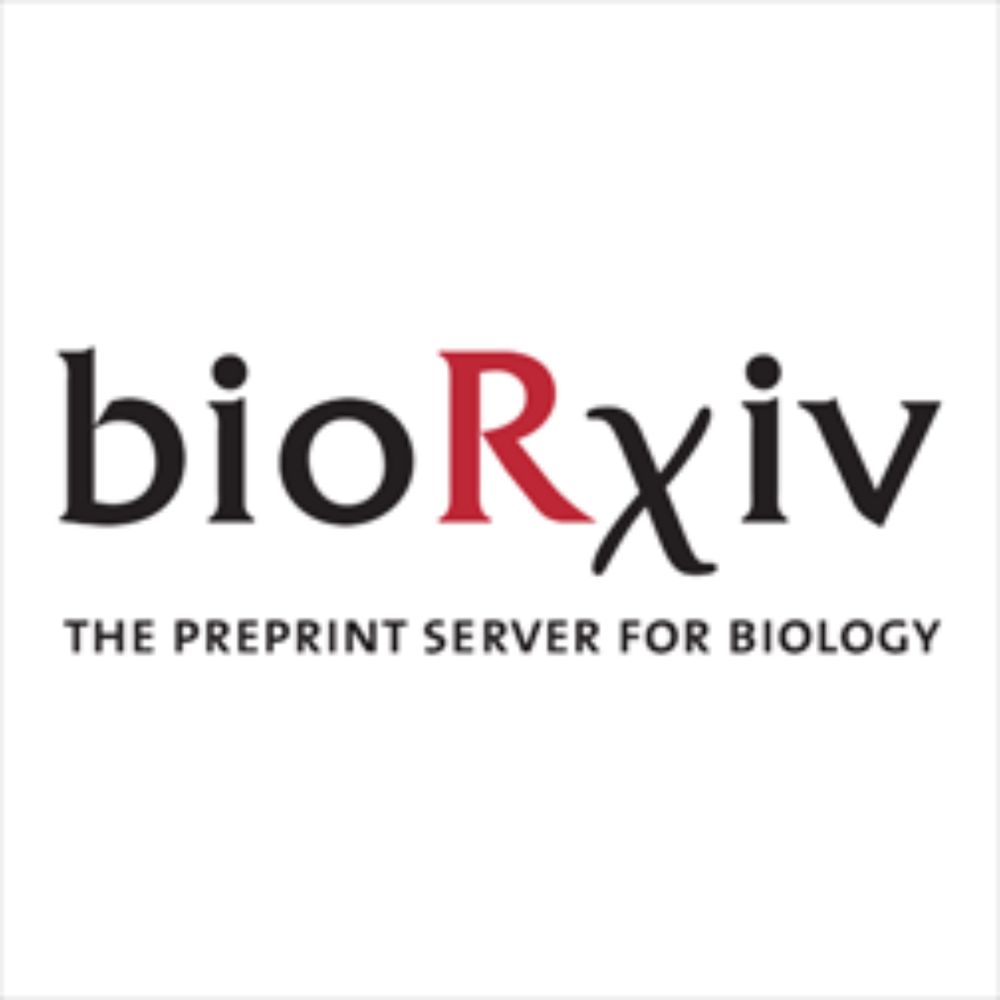
This preprint from Helen Sakharova is one of the coolest things to come out of my lab: “Protein language models reveal evolutionary constraints on synonymous codon choice.” Codon choice is a big puzzle in how information is encoded in genomes, and we have a new angle. www.biorxiv.org/content/10.1...
07.08.2025 08:29 — 👍 215 🔁 83 💬 6 📌 4Not saying I agree either way, but one pro for text-based file formats are less dependencies needed for viewing files
06.08.2025 22:42 — 👍 0 🔁 0 💬 1 📌 0This is so amazing, thank you!
31.07.2025 13:00 — 👍 1 🔁 0 💬 0 📌 0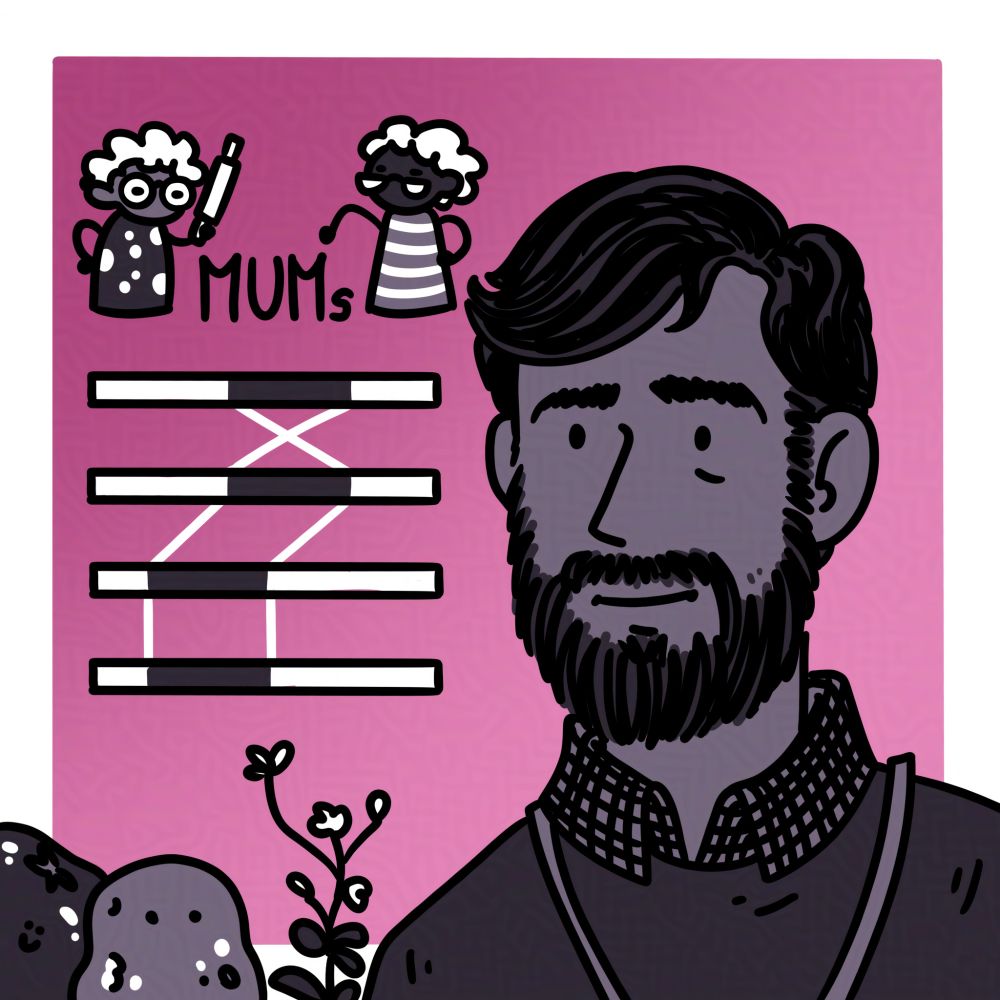
comic doodle of Vikram Shivakumar in a sweater and checkered shirt on a pink gradient background, with various elements of the talk to the left: two old moms pointing at MUMs, below an explanation of what those are (large chunks of the same DNA sequence through the genome), at the bottom a few of the organisms worked on: a tomato, a potato, an arabidopsis weed.
#SciArt doodle of @vikramshivakumar.bsky.social's talk yesterday at the @sangerinstitute.bsky.social on MUMs*
*maximal unique matches in pangenomes, now if you did that on sequenced moms you could do mummoms
Excited to share our new preprint on detecting foldback artifacts in long reads with my advisors Matthew Meyerson and @lh3lh3.bsky.social ! Stop by poster C-180 on Wednesday at ISMB/ECCB2025 to learn more and chat!
21.07.2025 14:26 — 👍 4 🔁 2 💬 0 📌 0
And of course, the poster itself:
21.07.2025 17:00 — 👍 2 🔁 0 💬 0 📌 0If you’re in Liverpool, stop by my poster A217 at ISMB/EECB 2025, and chat about all things pangenomes, MUMs, and alignment (and the Beatles or Oasis-mania)
21.07.2025 15:11 — 👍 16 🔁 6 💬 2 📌 0Really excited to see this published! To more mum-finding 🍻
17.06.2025 15:01 — 👍 21 🔁 7 💬 2 📌 0🖥️🧬We're thrilled to announce that one of our keynote speakers at #WABI2025 will be the inimitable @benlangmead.bsky.social! wabiconf.github.io/2025/talks/t... Ben's keynote is titled "We are what we index; a primer for the Wheeler Graph era", & it's sure to be a whirlwind tour of full-text indexing!
16.06.2025 12:46 — 👍 20 🔁 5 💬 1 📌 01/5 We introduce Movi Color, led by Steven Tan (a brilliant undergrad member of Langmead lab) for taxonomic and multi-class classification. It uses a full-text index based on the move structure and does not rely on predefined values (like k-mer length) for index building.
github.com/mohsenzakeri...
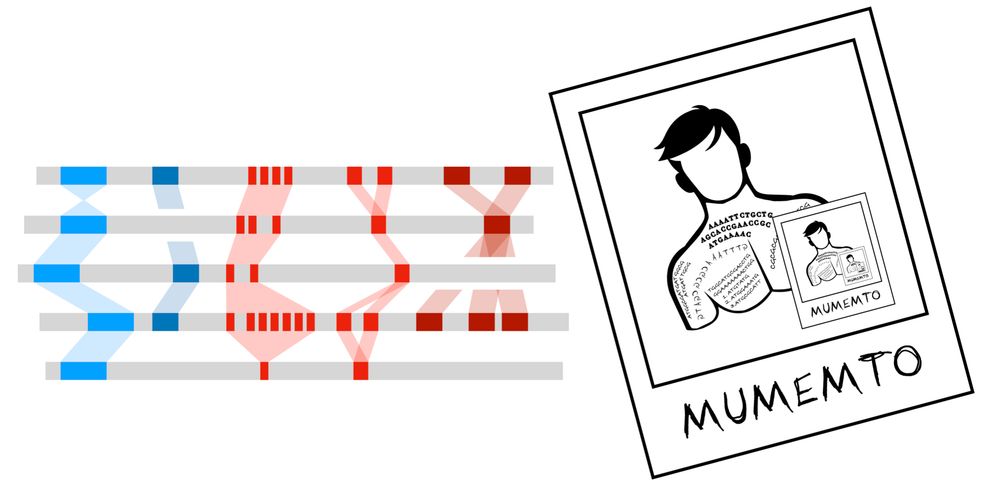
We've released a new version (v1.3) of Mumemto (github.com/vikshiv/mume...) that implements merging. Running Mumemto in merge-mode makes the output set of multi-MUMs dynamic, so adding new assemblies is as easy as computing a new set of MUMs and merging them in.
27.05.2025 19:35 — 👍 5 🔁 0 💬 0 📌 0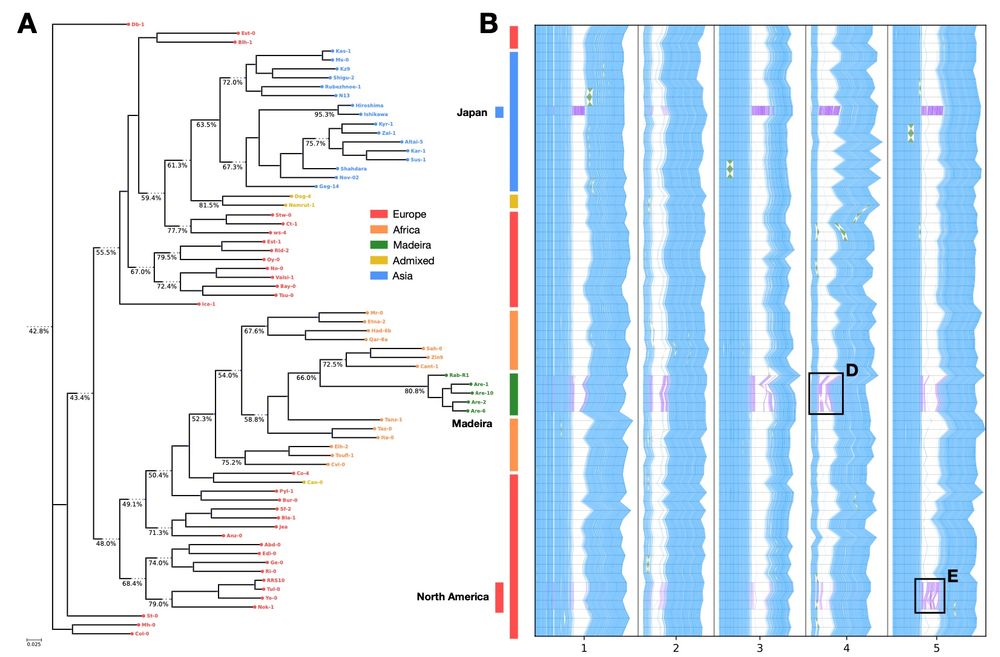

We can also merge along the shape of a phylogenetic tree, finding clade-specific variation and conserved elements. Previously, adding new assemblies can lose MUMs, which must be present across the whole collection. Now we can find MUMs that reveal local variation distinct to specific subgroups. 3/n
27.05.2025 19:35 — 👍 4 🔁 2 💬 1 📌 0
We implement two partition/merge algorithms that can merge multi-MUMs between datasets. This makes Mumemto highly parallelizable, but also very memory efficient if partitions are computed in serial. 2/n
27.05.2025 19:35 — 👍 2 🔁 0 💬 1 📌 0
Excited to share a new update to Mumemto, scaling MUM and conserved element finding to any size pangenome! Preprint out now w/ @benlangmead.bsky.social.
Mumemto scales to the new HPRC v2 release and beyond, and can merge in future assemblies without any recomputation! 1/n
Our pre-print on investigating variation in South Asian genomes is now out!
Thank you to @mikeschatz.bsky.social, @rajivmccoy.bsky.social and @aabiddanda.bsky.social for all their work on this.
🧵 A thread on the key results and takeaways from our work:

If you are here at #bog25 please check out my poster (number 87) tonight! 😁 Showing our work on common variation associated with aneuploidy in human embryos
07.05.2025 17:26 — 👍 20 🔁 7 💬 0 📌 0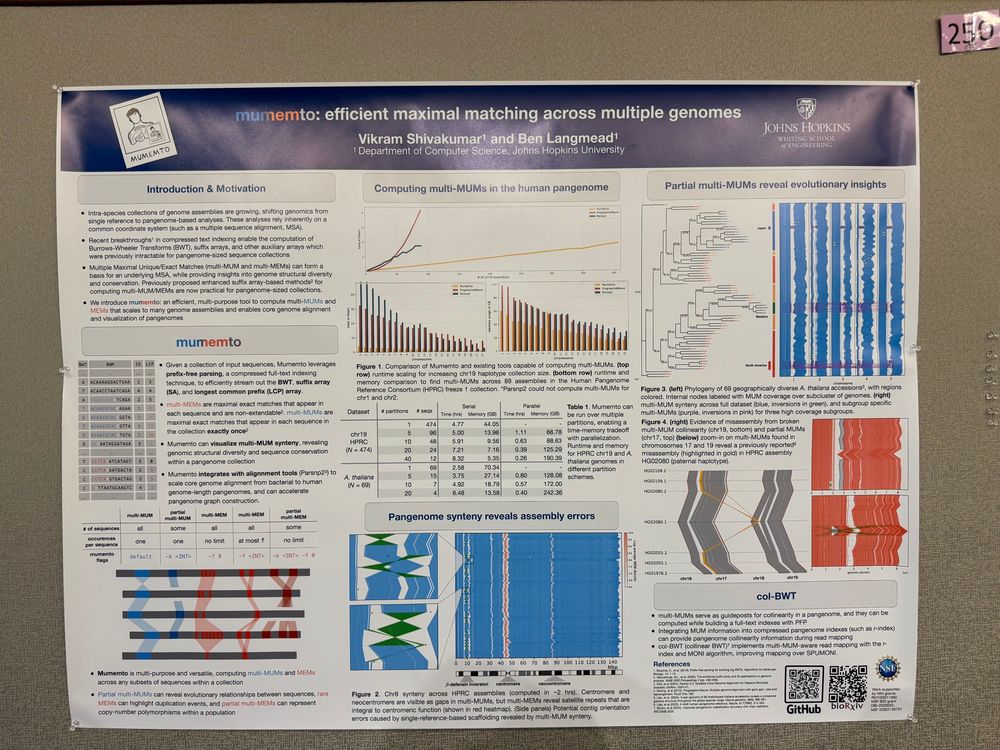
Excited to share our latest work on comparing and visualizing multiple genome assemblies to identify conservation and structural variation in pangenomes with Mumemto! Check out poster 250 at #bog25 if you are here. New preprint coming very soon 👀
09.05.2025 16:26 — 👍 34 🔁 14 💬 0 📌 2